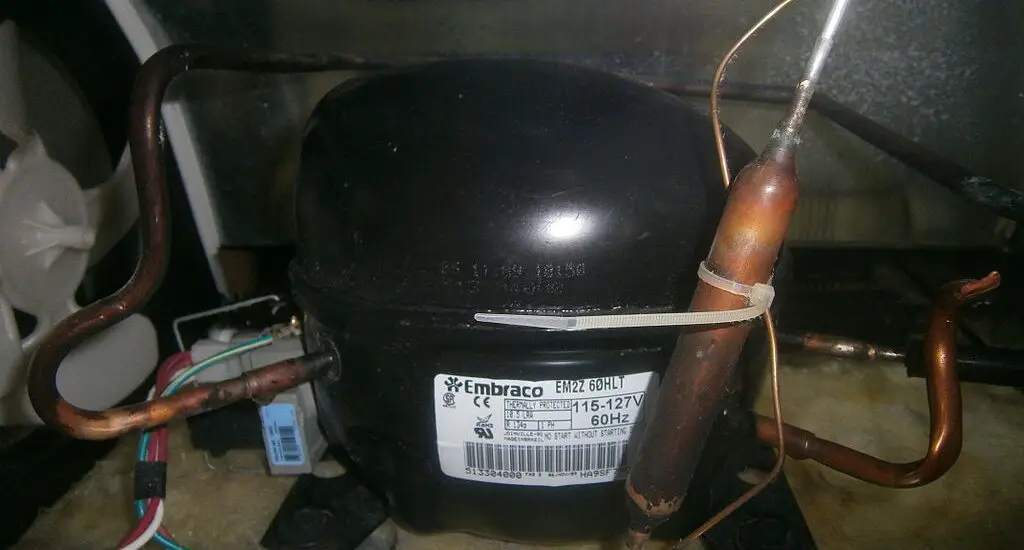The quick answer to the question “Can a refrigerator compressor be recharged?” is yes. This guide will discuss why you might need to recharge a compressor, the signs that indicate recharging is needed, the materials required, and the step-by-step procedure involved.

Table of Contents
Why and When Does a Compressor Need Recharging?
The necessity to recharge a refrigerator’s compressor arises due to a decrease in the levels of the refrigerant. This chemical compound is what enables the cooling process. The compressor circulates this refrigerant through coils. When the levels are low, the compressor can’t circulate enough refrigerant, affecting the appliance’s efficiency.
Here are the typical situations when a recharge is needed:
Age of the Refrigerator: Older models are more likely to face refrigerant depletion due to prolonged use.
Visible or Audible Leaks: If you hear a hissing sound or notice any liquid at the base, it could mean a refrigerant leak.
Increased Electricity Bills: A struggling compressor consumes more energy, causing a surge in your electricity bills.
Signs Your Compressor May Need Recharging
Identifying the need for a recharge is crucial for timely intervention. Here are detailed signs:
Temperature Issues: If the interior temperature is not as set, it’s a clear sign. Place a thermometer inside the fridge and freezer to monitor actual temperatures.
Frost Build-Up: Excessive frost means the compressor is not effectively removing heat. Regular defrosting should not be necessary in modern units.
Unusual Noises: Compressors make a humming sound. If you hear rattling or louder hums, it might indicate issues like low refrigerant levels.
Check out these other articles…
Are Refrigerator Compressors Expensive? Comprehensive Answer
Is My Refrigerator Compressor Working? 6 Steps to Find Out
Are Refrigerator Compressors Recyclable? Detailed Answer
Are Fridge Compressors Dangerous? The Facts You Need to Know
Is It Worth Replacing Compressor on Refrigerator? Answered
Materials and Tools Needed for Recharging
For recharging a compressor, specialized equipment is required, which should only be handled by professionals. These include:
Refrigerant: The type suitable for your specific fridge model.
Gloves: For handling the refrigerant safely.
Goggles: To protect your eyes from any accidental splashes.
Recharging Kit: This will typically include a canister of refrigerant and a pressure gauge.
Step-By-Step Guide to Recharging a Compressor
While recharging should be left to certified technicians, understanding the process can be informative. The steps are as follows:
Disconnect the Refrigerator: This is the initial safety step. The fridge is unplugged to avoid any electrical hazards.
Locate the Compressor and Service Valve: The compressor is generally at the back, often beneath a panel. The service valve is the point to insert the refrigerant. Remove any cover or panel to access them.
Attach Recharging Kit: The recharging kit has a hose and a canister containing refrigerant. The hose is connected securely to the service valve.
Release Refrigerant: Wearing safety gloves and goggles, the technician will slowly open the canister valve, allowing refrigerant to flow into the compressor. The pressure gauge on the kit will indicate when the adequate level is reached.
Disconnect and Restart: After achieving the correct refrigerant level, the technician will close the canister valve, disconnect the hose, replace any removed panels, and plug the fridge back in. The refrigerator may take a few hours to reach its optimal temperature.
